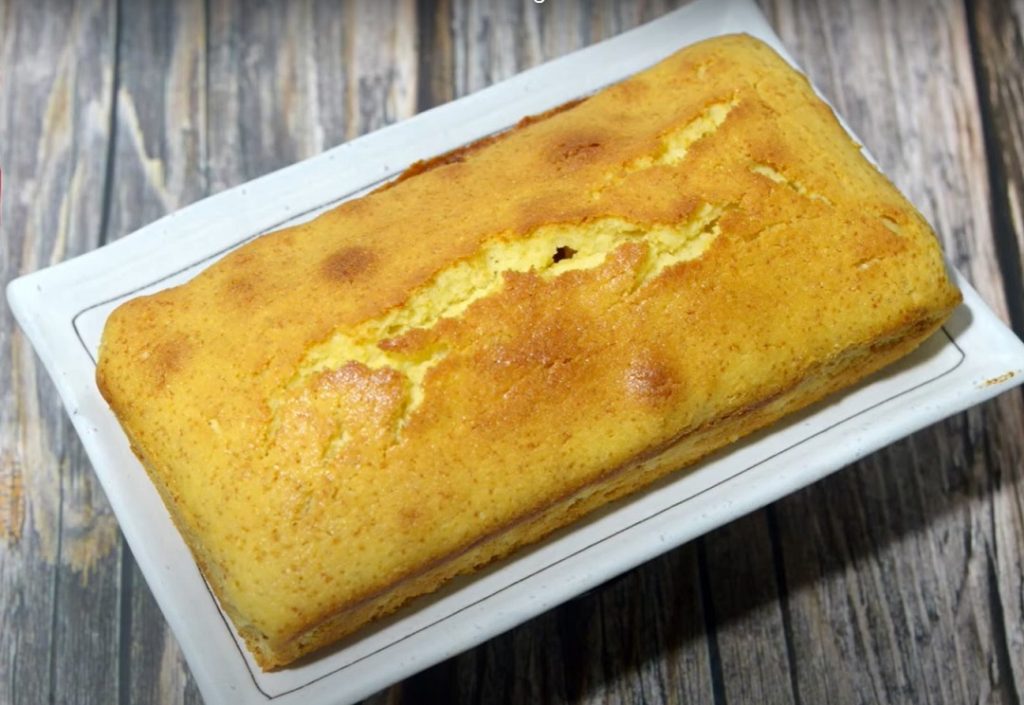
Introduction of Classic Original Pound Cake
Welcome to a journey back to the fundamentals of baking with an authentic recipe for a classic pound cake. This timeless delight brings together simplicity and taste, showcasing the essence of traditional baking at its finest. Follow these straightforward steps to create a pound cake that embodies the charm of a bygone era while tantalizing your senses with every bite.
Ingredients
- 100g Flour
- 100g Butter
- 80g Sugar
- 50g Milk
- 25g Almond Flour
- 1 Egg
- 2.5g Baking Powder
Instruction:
- Prepare the Batter:
- In a mixing bowl, combine butter, sugar, milk, and egg. Mix thoroughly until smooth.
- Incorporate Dry Ingredients:
- Gradually add flour, almond flour, and baking powder to the batter. Mix until all ingredients are well combined into a smooth batter.
- Preparation for Baking:
- Preheat the oven to 185°C. Grease and flour a cake mould. Pour the prepared batter into the mould, spreading it evenly.
- Baking:
- Place the mould in the preheated oven. Bake the pound cake at 185°C for approximately 35 minutes or until a toothpick inserted into the center comes out clean.
- Cooling and Serving:
- Once baked, remove the pound cake from the oven and let it cool in the mould for a few minutes. Then, transfer it to a wire rack to cool completely before slicing.
- Enjoy:
- Slice and savor the simplicity and deliciousness of this authentic classic pound cake. Perfect for any occasion or as a delightful treat paired with your favorite beverage.
Feel free to add any specific instructions or variations that might enhance the baking experience for your audience!
Video
More video
History and Story
It holds a special place in the world of baking, its legacy woven through centuries of culinary evolution. From its humble origins to its enduring popularity today, it has remained a symbol of simplicity and deliciousness in the realm of desserts.
Origins and Early History:
The origins of the it can be traced back to Europe, particularly to the early 18th century. Its name is derived from the traditional recipe that used a pound each of four main ingredients: flour, butter, sugar, and eggs. This straightforward ratio served as the foundation for this beloved cake, earning it the moniker “pound cake.”
Initially, it was a simple and sturdy dessert, favored for its long shelf life. Bakers, home cooks, and even early cookbook authors would often rely on this reliable recipe due to its easy memorization and consistent results.
Evolution of the Recipe:
Over time, as baking techniques evolved and ingredients became more varied and accessible, the original pound cake recipe underwent several modifications. Bakers started experimenting with additional ingredients, such as leavening agents like baking powder or soda to lighten the dense texture of the cake. Flavorings like vanilla, citrus zest, or spices were also introduced, enhancing the taste profile of the traditional cake.
The original pound cake’s simple ratio of ingredients remained the guiding principle, but subtle adjustments were made to achieve a lighter, more moist, and flavorful cake while retaining its essence.
Cultural Influence and Spread:
The popularity of the pound cake spread across continents through trade routes and immigration. As it journeyed to different corners of the world, the cake adapted to local tastes and traditions. In America, it found a place on Southern tables, becoming a staple dessert appreciated for its simplicity and versatility.
Each region embraced the pound cake, often incorporating regional ingredients or preparation methods, resulting in a diverse array of variations. Some cultures added nuts, fruits, or spirits to infuse unique flavors, while others transformed it into a canvas for elaborate decorations or glazes.
Symbolism and Significance:
The pound cake’s enduring popularity isn’t solely due to its delicious taste but also its symbolism. It became synonymous with celebration, family gatherings, and hospitality. It ability to be dressed up for special occasions or served plainly for everyday enjoyment contributed to its reputation as a versatile and timeless dessert.
Families passed down cherished pound cake recipes through generations, creating a sense of heritage and nostalgia surrounding this classic treat. It became a symbol of tradition and comfort, evoking fond memories of home-baked goodness.
Modern Adaptations and Relevance:
In today’s culinary landscape, it continues to hold its place of honor. While contemporary baking offers an abundance of intricate desserts, the pound cake remains cherished for its simplicity, reliability, and the way it effortlessly satisfies the sweet tooth.
Moreover, it has found new life in the era of culinary innovation. Chefs and home bakers alike reinterpret the classic recipe, infusing it with unique twists and flavors, incorporating diverse ingredients to suit modern tastes without losing sight of its fundamental charm.
Conclusion:
The story is a tale of tradition, adaptability, and timeless appeal. Its journey through history, from a basic four-ingredient cake to a beloved dessert cherished across cultures, speaks volumes about the universal love for simple yet delicious indulgences.
In an era where complexity often dominates the culinary scene, the enduring charm of the pound cake lies in its simplicity—continuing to captivate hearts and palates worldwide. Whether enjoyed plain or dressed up, the classic cake remains an iconic testament to the beauty found in the basics of baking.
